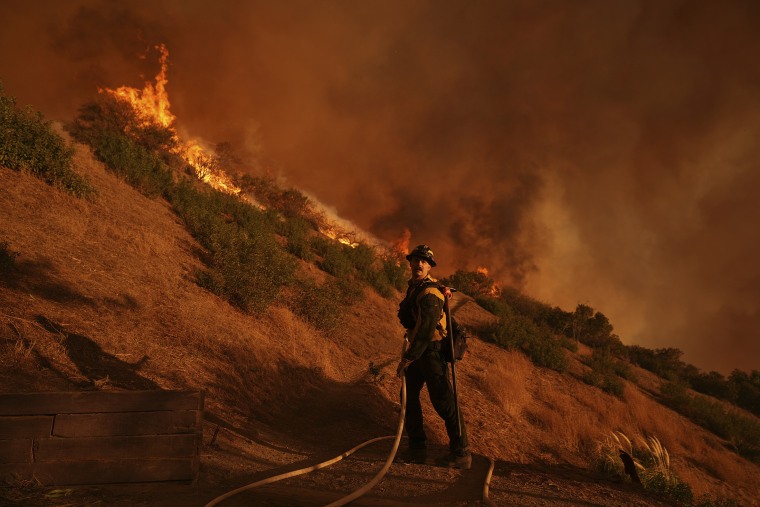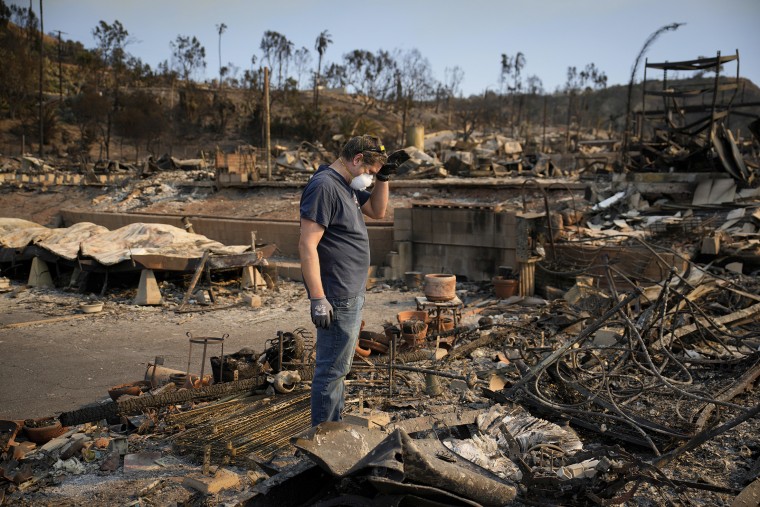Fueled by powerful winds and dry conditions, a series of ferocious wildfires erupted on Jan. 7 and roared across the Los Angeles area, killing at least 29 people, including some who died trying to prevent the fires from engulfing their homes, and destroying thousands of structures.
A city official in Los Angeles described the night of Jan. 7 as “one of the most devastating and terrifying” that she had seen in her corner of the city.
Here’s what we know about the fires.
Where are the fires?
The Palisades Fire erupted the morning of Jan. 7 in Pacific Palisades, a Los Angeles neighborhood east of Malibu, as a brush fire. The blaze grew to 23,448 acres before it was declared 100% contained on Friday, according to the California Department of Forestry and Fire Protection, known as Cal Fire. Cal Fire said the fire damaged or destroyed more than 6,800 structures.
The Eaton Fire ignited hours after the Palisades Fire near a canyon in the sprawling national forest lands north of downtown Los Angeles. It had exploded to 14,021 acres and was 100% contained Friday, according to Cal Fire. The agency has reported that 10,491 structures were damaged or destroyed in the blaze.

As firefighters were battling the largest blazes, additional fires broke out in the Los Angeles area. Crews were able to stop the forward spread and contain the blazes.
Those blazes, which included the Lidia, Archer, Woodley, Sunset, Kenneth, Hurst and Auto fires, have been 100% contained and are no longer considered active, according to Cal Fire. Between them, the fires scorched 2,399 acres.
Two weeks after the initial fires, the Hughes Fire began near Castaic Lake in northern Los Angeles County on Jan. 22 and quickly grew to over 10,000 acres. It was fully contained Thursday after covering 10,425 acres.
Have there been deaths and injuries?
At least 29 people have died in the fires, according to Los Angeles County officials.
The county medical examiner’s office is still investigating many of the deaths. The department noted that it cannot confirm human remains until it processes them at its facility.
At least 17 of the deaths were in the Eaton Fire and 12 in the Palisades Fire, according to the medical examiner’s office.
The medical examiner’s office said it could take weeks to confirm the identities of those killed.
Officials have warned that the death toll could grow.
Los Angeles County Fire Chief Anthony Marrone said a significant number of people who did not heed evacuation orders have been injured in the Palisades Fire. He also said there have been significant injuries in the Eaton Fire.
How many people are affected?
At one point there were close to 200,000 people under evacuation orders as crews tried to battle back the fires. In the days and weeks since, officials announced the limited repopulation for some areas evacuated amid the Palisades and Eaton fires.
The City of Los Angeles Joint Information Center announced Monday that residents off all burn areas in the city's portion of the Palisades Fire will be allowed to return, but the overnight curfew remained. The cities of Malibu and Santa Monica, as well as the areas of the Palisades Fire controlled by Los Angeles County, lifted evacuations previously.
Residents of the Eaton Fire area were also allowed to return last week, but the overnight curfew for the zone remained.
The fires have destroyed entire neighborhoods and blocks, leaving an unknown number of people homeless.
How much damage have the fires done?
The insured losses from the fires may exceed $20 billion, and total economic losses could reach $50 billion, according to estimates published by JPMorgan.

Those losses would far exceed the $12.5 billion in insured damages from the 2018 Camp Fire, which until now was the costliest blaze in the country’s history, according to data from Aon.
What led to the fires?
The official cause of the fires has not been determined.
The combination of drought-like conditions — Southern California has had less than 10% of average rainfall since Oct. 1 — and powerful offshore winds that hit the region last week prompted fire weather that was, in the words of the National Weather Service, “about as bad as it gets.”
The agency issued a red flag warning — indicating an increased risk for fire danger — to 19 million people. Wind gusts topping 70 mph were recorded at several locations across the region.

Climate scientist Daniel Swain pointed to the weather whiplash California has experienced in recent years — lurching between drought and heavy rainfall — and said such swings are a key element of the fire weather gripping the region.
“It’s not just that drier conditions are perpetually more likely in a warming climate,” he said, according Inside Climate News. “It’s that this oscillation back and forth between states is something that is particularly consequential for wildfire risk in Southern California.”
More coverage of the wildfires
- ‘Are u OK?’: Angelenos share their text exchanges amid wildfire devastation
- Beloved Black-owned bookstore in Pasadena becomes a safe haven for fire victims
- See how large the California wildfires are
- How to help the victims of the Los Angeles fires
- Are arsonists responsible for the Los Angeles wildfires?
- Electrical tower a focus as Eaton Fire's potential origin after video clues emerge

